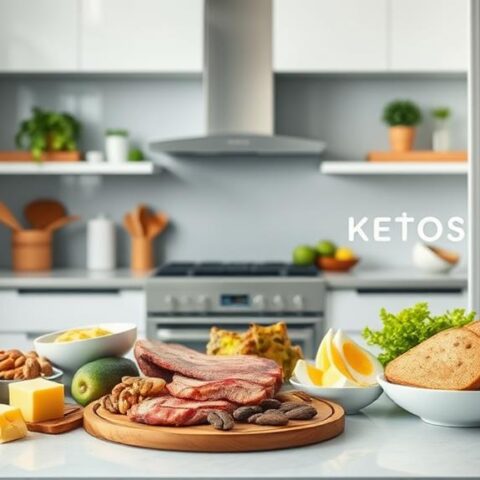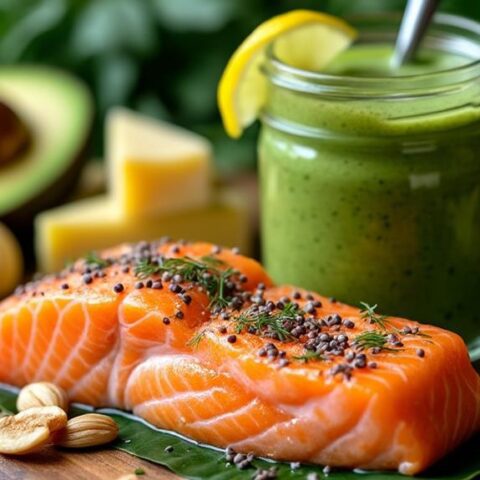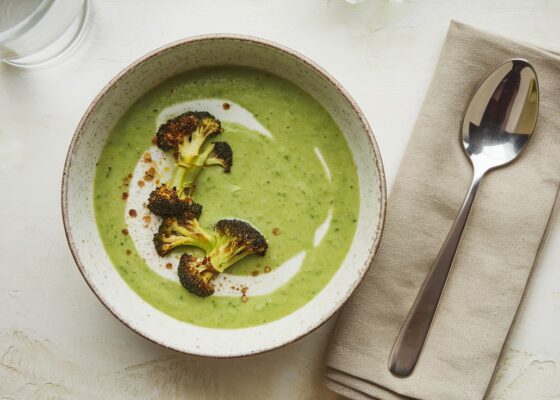
Wine can be incorporated into a low-carb diet by choosing dry varieties with minimal sugar content. Dry red wines typically contain 2-4 grams of carbs per 5-ounce serving, while dry whites average 1-2 grams. Sparkling options labeled "brut" or "extra brut" offer even lower carbohydrate content, around 0.8 grams per glass. To maintain ketosis, wine enthusiasts should avoid sweet or dessert varieties and practice portion control, while understanding proper wine selection reveals numerous enjoyable options.
Key Takeaways
- Yes, you can drink wine on a low-carb diet by choosing dry wines, which contain only 1-4 grams of carbs per glass.
- Dry red wines like Cabernet Sauvignon and Merlot are suitable choices, containing 2-4 grams of carbs per 5-ounce serving.
- Opt for sparkling wines labeled "brut" or "extra brut," which contain minimal carbs at approximately 0.8 grams per serving.
- Avoid sweet and dessert wines, as they can contain over 20 grams of carbs per glass.
- Monitor portion sizes and stick to 4-6 ounces per serving to maintain your low-carb dietary goals.
Understanding Wine's Carbohydrate Content
Wine enthusiasts following a low-carb diet need to understand the varying carbohydrate content across different wine varieties. The fermentation process largely determines the carbohydrates present in wine, with residual sugar playing a vital role.
Dry wines typically contain minimal carbs, ranging from 1-4 grams per glass, making them suitable for low-carb diets. Full-bodied red wines like Cabernet Sauvignon and Merlot contain 2-4 grams of carbs per 5-ounce serving, while dry white wines average 1-2 grams.
For those seeking the lowest carb options, sparkling wines labeled as brut or extra brut offer just 0.8 grams per serving. However, sweet wines and dessert varieties can exceed 20 grams of carbs per glass, making them less compatible with low-carb dietary goals.
Best Low-Carb Wine Varieties to Choose
For wine enthusiasts following a low-carbohydrate lifestyle, dry red wines offer excellent options, with popular varieties like Cabernet Sauvignon and Merlot containing just 2-4 grams of carbs per serving.
Sparkling wine enthusiasts can confidently choose brut or extra brut varieties, as these contain minimal carbohydrates while delivering the celebratory effervescence many enjoy.
Those seeking the lowest possible carbohydrate content should prioritize wines labeled as dry, particularly Sauvignon Blanc and brut Champagne, which typically contain fewer than 2 grams per serving.
Dry Reds Under Control
When choosing red wines on a low-carb diet, understanding which varieties offer the lowest carbohydrate content becomes vital for maintaining dietary goals.
Dry red wines typically contain 2-4 grams of carbs per glass, with Pinot Noir emerging as a particularly suitable option at just 2-3 grams per serving. The key lies in selecting wines with minimal residual sugar content, clearly labeled as "dry" on the bottle.
For those monitoring their carb intake, regional selections from Bordeaux or Rioja often provide excellent low-carb options.
While full-bodied reds tend to carry higher carbohydrates, lighter varieties can help minimize impact on daily limits.
Moderation remains essential, however, and limiting consumption to one glass guarantees better alignment with low-carb dietary objectives while still allowing for occasional enjoyment.
Sparkling Brut Worth Sipping
Among sparkling wine varieties, Brut and Extra Brut selections stand out as exceptional choices for those following a low-carb lifestyle, containing remarkably low levels of residual sugar and carbohydrates.
With just 1-2 grams of carbs per 5-ounce serving, options like Champagne, Prosecco, and Cava offer sophisticated alternatives for health-conscious wine enthusiasts.
A standard glass of Brut Champagne contains as little as 0.8 grams of carbs, making it particularly suitable for low-carb diets.
When selecting sparkling wines, consumers should look specifically for the "Brut" designation on labels to guarantee minimal sugar content.
To enhance the experience, these effervescent selections pair beautifully with low-carb snacks such as artisanal cheeses and fresh vegetables, creating a perfectly balanced, carb-conscious dining experience.
The Science Behind Wine Fermentation and Carbs
The transformation of grape juice into wine relies on a fascinating biochemical process that directly impacts its carbohydrate content.
During fermentation, yeast converts grape sugars into alcohol, with the residual sugar levels determining the final carbs in each glass. Dry wines, which undergo complete fermentation, typically contain less than 4 g/l of residual sugar, making them ideal for low-carb diets with fewer than 2 grams of carbohydrates per serving.
The grape variety and winemaking techniques play essential roles in determining carbohydrate content.
When fermentation is stopped early, more residual sugar remains, resulting in sweet wines that can contain up to 20 grams of carbs per glass.
Understanding this process helps wine enthusiasts make informed choices about which wines best align with their dietary goals.
Red Wine Options for Low-Carb Dieters
Selecting red wine while following a low-carb diet becomes remarkably straightforward once dieters understand their options. For those mindful of their carbohydrate intake, dry red wines offer excellent choices, with most containing only 2-4 grams of carbs per serving. Pinot Noir stands out as a particularly favorable option, containing approximately 2.9 grams of carbs per 125ml serving. Prioritization of high-quality fats in conjunction with low-carb wine choices can enhance cardiovascular health.
| Wine Type | Carbs/Serving | Best for Diet |
|---|---|---|
| Pinot Noir | 2.9g | Ideal |
| Cabernet Sauvignon | 3.2g | Good |
| Merlot | 3.7g | Moderate |
| Fortified Wines | 20g+ | Avoid |
| Dessert Wines | 20g+ | Avoid |
When selecting wines, look for labels indicating "dry," "trocken," or "sec" to guarantee minimal residual sugar content. Avoid high-carb options like fortified wines, and remember that moderation remains essential for maintaining a successful low-carb lifestyle.
White Wine Selections for Carb-Conscious Sipping
For those following a low-carb lifestyle, Chardonnay emerges as an excellent choice with its modest 1-2 grams of carbohydrates per standard serving, making it compatible with most dietary restrictions. Sauvignon Blanc offers similar benefits, containing minimal carbohydrates while providing a crisp option that aligns well with ketogenic diet requirements. Both wines represent reliable choices for health-conscious consumers, as their naturally low sugar content results from complete fermentation of grape sugars during production. Incorporating wine into a ketogenic diet can be a delightful experience, especially since the ketogenic diet greatly reduces blood glucose levels, helping to stabilize HbA1c and improve insulin sensitivity.
Crisp Chardonnay Carb Facts
Many wine enthusiasts following a low-carb lifestyle can confidently reach for a glass of Chardonnay, as this popular white wine contains just 2-3 grams of carbohydrates per 5-ounce serving.
This crisp varietal proves particularly suitable for those monitoring their carb intake, especially when selecting bottles labeled as "dry" or "sec," indicating minimal residual sugar content.
Wine lovers can explore Chardonnays from renowned regions like Burgundy and California, where producers typically craft drier styles with lower carb content.
When paired with lean proteins and non-starchy vegetables, these wines complement a low-carb dining experience perfectly.
As with any alcoholic beverage, moderation remains essential for maintaining dietary goals, making it advisable to stick to standard serving sizes while enjoying this versatile white wine.
Sauvignon Blanc's Keto Benefits
Sauvignon Blanc stands out as an excellent choice for wine enthusiasts following a ketogenic lifestyle, offering a mere 2.5 grams of carbohydrates per standard serving. This dry white wine's crisp acidity and minimal residual sugar content make it particularly suitable for those monitoring their carb intake while maintaining ketosis.
When selecting Sauvignon Blanc for a low-carb diet, consumers should focus on bottles labeled specifically as "dry," ensuring the lowest possible carbohydrate content.
The versatility of this varietal extends beyond solo consumption, as it can be incorporated into keto-friendly wine cocktails. Its invigorating profile pairs exceptionally well with low-carb foods, particularly seafood and fresh salads, making moderate consumption both enjoyable and compatible with dietary goals.
Sparkling Wines That Won't Break Your Carb Bank
Three outstanding varieties of sparkling wine emerge as ideal choices for those following a low-carb lifestyle: Champagne, Prosecco, and Cava.
These effervescent options, particularly when labeled as Brut or Extra Brut, contain minimal carbs per serving while delivering sophisticated flavors.
Selecting Brut or Extra Brut sparkling wines ensures an elegant tasting experience while keeping carbohydrate content remarkably low.
For those monitoring their carb intake, consider these low-carb sparkling wine options:
- Brut Nature Champagne: Contains virtually no added sugar and minimal residual sugar content
- Extra Brut Prosecco: Typically offers 1-2 grams of carbs per 5-ounce serving
- Traditional Cava: Spanish sparkling wine with approximately 1-2 grams of carbs per glass
- Brut Varieties: Any sparkling wine labeled Brut guarantees lower sugar content
These selections provide celebratory bubbles without compromising carb restrictions, making them perfect for special occasions or casual enjoyment.
How to Read Wine Labels for Carb Content
Understanding wine labels can be a valuable skill for individuals following a low-carb diet, as these labels contain key indicators of a wine's carbohydrate content.
When examining wine labels, look for terms like "dry," "brut," or "trocken," which signal lower residual sugar levels and fewer carbs per serving size of 5 ounces.
While most wine labels don't display direct carb counts, consumers can focus on the residual sugar content, typically measured in grams per liter.
Dry wines generally contain less than 10 g/l, with dry reds offering 2-4 grams of carbs per serving and dry whites containing 1-2 grams.
Avoid wines marked as "sweet" or "dessert," which can pack up to 20 grams of carbs per glass.
Some producers targeting low-carb markets now provide detailed nutritional information on their packaging or websites.
Tips for Enjoying Wine While Staying Low-Carb
While maintaining a low-carb lifestyle might seem challenging for wine enthusiasts, several practical strategies can help individuals enjoy their favorite vintages without compromising their dietary goals.
Understanding wine selection and consumption patterns plays an essential role in successful weight loss while still enjoying occasional glasses.
- Choose dry wines like Sauvignon Blanc and Pinot Noir, which contain minimal residual sugar and fewer carbohydrates per serving.
- Select Brut or extra Brut sparkling wines, as these options are naturally low in carbs and suitable for health-conscious consumers.
- Monitor portion sizes, limiting servings to 4-6 ounces to maintain dietary goals.
- Avoid high-carb wines such as dessert varieties, which can derail low-carb eating plans due to their heightened sugar content.
- Consider incorporating keto-friendly sweeteners into your diet to maintain ketosis while enjoying your favorite wines.
Practicing moderation and making informed choices allows wine enthusiasts to maintain their low-carb lifestyle while still enjoying their favorite beverages.
Wine and Ketosis: What You Need to Know
Maintaining ketosis requires careful attention to both food and beverage choices, particularly when it comes to wine consumption.
When selecting wine on a low-carb diet, dry wines like Cabernet Sauvignon prove to be excellent options due to their minimal residual sugar content and lower carbohydrate levels.
The relationship between wine and ketosis is complex, as alcohol consumption can temporarily pause fat burning while the body processes the alcohol.
However, choosing wines with 1-4 grams of carbohydrates per serving and practicing moderate consumption can help maintain ketosis effectively.
Dry wines undergo thorough fermentation, converting most sugars into alcohol, making them more compatible with low-carb lifestyles.
To optimize wine enjoyment while staying in ketosis, focus on selecting varieties with minimal residual sugar and limiting portion sizes.
The ketogenic diet reduces carbohydrate intake, leading to lower insulin production and enhanced insulin sensitivity, which aids in maintaining a state of ketosis even when consuming low-carb wine.
Pairing Low-Carb Wines With Diet-Friendly Foods
Successful wine pairing on a low-carb diet opens up a world of flavorful possibilities that complement both the wine and dietary requirements. When selecting low-carb wines and their accompaniments, focus on options that enhance flavor while maintaining dietary goals.
- Sauvignon Blanc and Pinot Noir pair excellently with lean proteins like grilled chicken and fish.
- Dry Champagne creates a perfect match with non-starchy vegetables, particularly asparagus and bell peppers.
- Full-flavored aged cheeses such as Gouda and Brie complement low-carb wines while keeping carbs minimal.
- Chardonnay pairs wonderfully with diet-friendly sides like roasted cauliflower and zucchini noodles.
For a complete meal that adheres to low-carb requirements, consider combining these wines with fresh salads dressed in olive oil and vinegar, which typically contain only 2-4 grams of carbs per serving.
Frequently Asked Questions
How Much Wine Can You Have on a Low-Carb Diet?
Moderate wine consumption on low-carb diets allows 4-6 ounces per serving, with dry wines containing 1-4 grams of carbs. Choose brut sparkling wines, dry reds, or whites for minimal carb impact.
Will One Glass of Wine Kick Me Out of Ketosis?
One glass of dry wine typically won't disrupt ketosis, as its low carb content aligns with dietary restrictions. Individual alcohol metabolism varies, so monitoring personal tolerance while practicing moderation guarantees maintained ketosis effects.
Can I Have Two Glasses of Wine on Keto?
Two glasses of dry wine can fit within keto guidelines, containing 1-4g carbs per serving. Selecting low-carb options like brut champagne while monitoring overall intake helps maintain ketosis despite slower alcohol metabolism.
Is Gin and Tonic Keto?
Traditional gin and tonic isn't keto-friendly due to tonic water's high carb content. For keto alternatives, mix gin with soda water or sugar-free tonic water to create low-carb cocktails while maintaining party-ready flavor combinations.
Conclusion
Enjoying wine while maintaining a low-carb lifestyle is achievable with mindful choices and moderation. By selecting dry wines with minimal residual sugar, understanding fermentation processes, and reading labels carefully, wine enthusiasts can stay within their carbohydrate limits. Whether opting for a crisp Sauvignon Blanc or a bold Cabernet Sauvignon, smart wine selections paired with appropriate low-carb foods allow for continued enjoyment of this time-honored beverage without compromising dietary goals.










No Comments